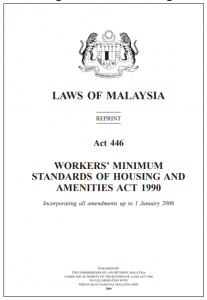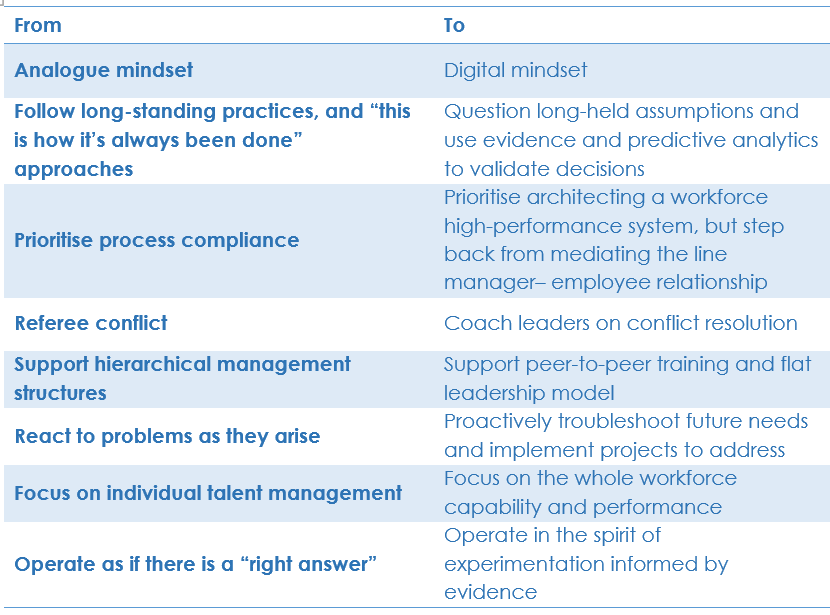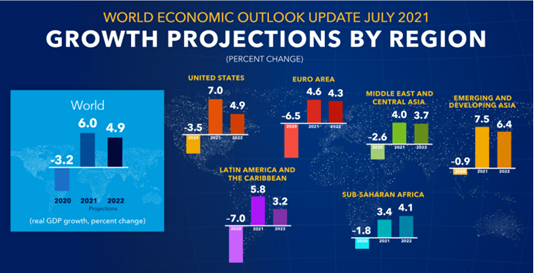The COVID-19 Pandemic: The Greatest Economic Downturn Since the Great Depression
The COVID-19 pandemic caused one of the biggest health and socio economic disruption that the world has ever seen, hitting individuals, businesses and industries at a rapid and unprecedented scale.
While the 2008-2009 global financial crisis was considered the greatest economic downturn since the Great Depression, COVID-19 has triggered a more radical and abrupt shift in the global financial markets.


Two years on, COVID-19 continues to spread across the world, causing devastating effects to communities, particularly vulnerable and lower income groups. According to the World Health Organization (WHO), the total number of confirmed COVID-19 cases across the globe as of 24 October 2021, stood at 244.3 million. This included over 4.9 million deaths. The United States had the biggest number of cases at over 92.6 million. This is followed by Europe and Southeast Asia at 74.4 million and 43.7 million cases respectively. It is not all bad news however, as vaccination rates also increased globally within the same period. Over 6.6 billion doses of the COVID-19 vaccination have been administered, as of 20 October 2021.
Unsurprisingly, the pandemic has also disrupted the workforce and workplace around the world. The International Labour Organization (ILO) reported that at 8.8%, the working hours lost in 2020 was approximately four times greater than during the global financial crisis in 2009. This is equivalent to the loss of 255 million full-time employment and was most noticeable in Latin America and the Caribbean, Southern Europe, and Southern Asia.
50% of the total employment losses were due to rising inactivity while the remainder could be attributed to reduction in working hours within employment. However, in the 4th quarter of 2020, the lost of global working hours went down to 4.6%, equivalent to 130 million full-time jobs. This provided an indication that a significant economic recovery would occur in the second half of 2021, thanks to the gradual rollout of the COVID-19 vaccine across regions.
Comparatively, in Malaysia, a survey conducted by Ipsos in January 2021, revealed that the country faces higher work-related challenges than the global average. The findings were based on 12,823 employed adults between the ages of 16 to 74, around the world.

More than a third of Malaysians had to take leave of absence, or either reduced or increased their working hours since the outbreak. Seventeen percent of Malaysians claimed to have left or lost their job in comparison to only 15% on the global average. This has consequently affected the level of anxiety faced by Malaysians, which is at 74% higher than the global average. This is followed by stress due to changes in work routine at 67% and stress due to family pressures at 58%. On the other hand, the global average for anxiety, stress due to changes in work routine and stress due to family pressures all stood at 56%, 55% and 45% respectively.
Generally, Malaysian employees struggle to achieve a work-life balance during the pandemic due to inadequate home office setup or equipment as well as the feeling of being isolated while working from home. However, it is also worth noting that women below 35 and lower income employees are more vulnerable to the negative effects of COVID-19 and the ensuing movement restrictions.
The study conducted by Ipsos is aligned to the initial findings by the Department of Statistic Malaysia (DOSM) which revealed that Malaysians are not prepared for the extended Movement Control Order (MCO). The most affected industries where the highest number of workers lost their jobs are agriculture at 21.9%, followed by services at 15.0% and industry at 6.7%. Approximately 46.6% of workers lost their job, 94.8% experienced a decreased in their income and 35.5% experienced income reduction of more than 90%.

A study conducted by Jobstreet in August 2020, disclosed similar analysis, where almost 91% of organisations implemented changes in response to COVID-19. Among the most notable impact of these changes include 50% experienced reduction in employee remuneration and 47% of employees were required to work from home. Reduction in manpower is another negative impact faced by Malaysian employers due to the freezing of the number of new hires and permanent or temporary layoffs during this period.
According to the Malaysian Economic Statistic Review, the unemployment rate in Q1 2021 is 4.8% which is comparatively higher to Q1 2020’s 3.5%. In real terms, the total number of unemployed individuals in Q1 2021 is 771,800, an increase of 225,200 from Q1 2020. The report further highlighted that the unemployment rate of youths aged 15 to 24 has increased to 12.1%.

According to the President of the Malaysia Employer Federation, Datuk Dr. Syed Hussain Syed Husman, in a statement to The Sun, at 60%, professionals, managers, executives, and technicians make up the largest number of individuals who were retrenched during the crisis.
He added that most employers have shifted towards digital tools and technologies in order to be able to operate effectively and productively with reduced manpower. Such business innovation, coupled with the need to mitigate the broader economic uncertainties mean that most companies are only able to offer fixed term employment contracts or shorter term employment to new employees.
Nevertheless, it is worth noting that there is growing demand for sectors that manufacture rubber gloves, Personal Protective Equipment (PPE) and medical-related equipment, which have created new employment opportunities for Malaysians during the pandemic. However, these are still insufficient to mitigate the overall broader impact of unemployment across many more industries (Barhan, 2021).
According to Jason Loh, Research Head of Social, Law and Human Rights, the government introduced the ‘Skim Jaminan Penjana Pekerjaan’ (Employment Generation Guarantee Scheme) as a way to improve the employability of Malaysian workers and subsequently reduce the national unemployment rate. The scheme aimed to create about 500,000 employment opportunities while another half a million is expected to come from jobs created through the Malaysia Digital Economy Blueprint (MyDigital) through to 2025. He also mentioned that the government would incorporate upskilling and training programmes into these schemes, and companies were encouraged to actively cooperate and participate in them.
This was announced by the Finance Minister Tengku Datuk Seri Zafrul Tengku Abdul Aziz during the tabling of Budget 2021, where the government has allocated RM3.7 billion for such initiatives. He also announced the government’s Short-Term Employment Programme or MyStep, which has since supported over 30,377 individuals in securing jobs in Government Linked Companies (GLC) and their strategic partners (Koya, 2021).
According to the World Bank, Malaysia has a high dependency on migrant workers for low skilled jobs, primarily in the manufacturing, services, and agricultural sectors. As of September 2019, there are approximately 1,975,879 migrant workers in Malaysia. Most of these workers are from Indonesia followed by Myanmar and Vietnam (Engblom, 2020).
COVID-19 has continued to disproportionately impact vulnerable members of the community, including migrant workers. This is compounded by the impact of the movement control order (MCO) on businesses, which have placed greater risk on the job security of migrant workers.

The garment and apparel industry was the hardest hit by the pandemic, leaving thousands of workers unemployed and fighting for their survival. TRIANGLE in ASEAN is part of the ILO’s global efforts to promote fair migration. Working in collaboration with the MTUC, Tenaganita and Our Journey, it provided humanitarian support and assistance to 7,214 migrant workers who have lost their jobs due to the pandemic. During this voluntary period, MTUC identified that there were violation of migrant workers’ and labour rights which included unfair termination, unpaid wages, poor living conditions, forced working in non-essential services, and uncertainty of employment status due to limited contact with employers. Several of these cases were reported to the Labour Department for further investigations.
Beyond that, the rise in COVID-19 cases among migrant workers led government authorities to inspect their living conditions. The Human Resource Minister, Datuk Seri M. Saravanan revealed that nine out of 10 migrant workers were provided with accommodation that does not comply with the standards required under the Workers’ Minimum Standards of Housing and Amenities Act 1990 [Act 446]. These accommodations were also found to be in non-compliance with COVID-19 SOPs, including social distancing.
 Act 446 aimed to compel employers to provide minimum standards of housing and amenities to foreign employees and local estate workers in the agriculture, plantations, and mining industries. The Act adopted the international guidelines established in the International Labour Organization Workers’ Housing Recommendation 1961 (Recommendations 115) and the Code of Conduct for Responsible Business Alliances.
Act 446 aimed to compel employers to provide minimum standards of housing and amenities to foreign employees and local estate workers in the agriculture, plantations, and mining industries. The Act adopted the international guidelines established in the International Labour Organization Workers’ Housing Recommendation 1961 (Recommendations 115) and the Code of Conduct for Responsible Business Alliances.
The Human Resources Ministry has given a considerable grace periods for employers to improve their employee accommodation facilities, in order to curb further transmission of COVID-19 amongst migrant clusters. In addition to the above, the Government instructed all employers to perform COVID-19 screening on all migrants, including undocumented workers and refugees.
The cost of the COVID-19 swab test was covered by the Social Security Organisation (SOCSO) for workers who contribute to SOCSO (Sandanasamy, 2020).
Additionally, to solve the issue of undocumented immigrants, the Government introduced two programmes; The Return Recalibration Programme which allow illegal immigrants to return to their country of origin on a voluntarily basis with specific conditions and the Labour Recalibration Programme which regularise illegal immigrants to be employed as legal foreign workers. This programme is open to employers of specific industries until the end of 2021. As of 1 July 2021, a total of 248,083 immigrants registered with the programme, with 97,892 individuals opting to return to their country of origin and the remainder choosing to be legally employed (Bernama 2021).
Government’s Measures in Handling COVID-19
The disruption brought forth by the COVID-19 pandemic on business operations has shifted the role of Human Resources to a new paradigm of adaptability, resilience and digitalisation. Subsequently, it strategically creates a new opportunity for HR leaders to re-engineer and re-shape the core functionality of Human Resources in the new normal. In these unprecedented times, HR Leaders need to be at the forefront of managing various challenges, uncertainties, and emotions of their stakeholders.
The challenges that resulted from the pandemic have pushed organisations to tap into new technology, accelerating the adoption of new tools such as those related to digital HR. This will require the development and enforcement of policies and strategies that are geared towards capitalising the opportunities from Industry 4.0 and facilitating a digitally enabled work environment.
A survey conducted by KPMG in October 2020 summarises the pivots that HR leaders need to prioritise to transform their organisations to fit into the new reality (Cornish, 2020).
Digitalisation changes the socio-economic environment, leading to the development of new business models and the automation of jobs that has and will continue to replace traditional roles at a rapid pace. This will eventually lead to a radical transformation in the labour market. Therefore, employees need to equip themselves with a new set of skills and competencies in areas such as cognitive, digital, social and those that are job-specific. Beyond that, they should uphold capability and motivation in managing the transformation effectively and efficiently.


Digitalisation boost employment opportunities in various fields. However, the opportunities could be limited to employees who possess the required high level of skills, competencies, and knowledge. Specific and high level of skills and competencies will be the pre-requisite for a productive economic growth especially in the current economic situation.
Therefore, there is a risk that digitalisation may threaten vulnerable groups, mainly lower skilled workers and young people as automation, robotics and machines replaces these groups and the jobs that they could do. Consequently, job losses amongst these vulnerable groups can become a critical issue that employers need to mitigate.
In preparing the Malaysia workforce to embrace digitalisation, the Government has introduced various upskilling and reskilling programmes in collaboration with various organisations and institutions. Some of the programmes focus on developing digital skills and preparing for jobs of tomorrow. These include MyStep, MyDigitalWorkforce, Upskill Malaysia and many others.
It has been over 2.5 years since the WHO declared COVID-19 as a global pandemic. Since then, Malaysia have lived through many phases of the Movement Control Order (MCO). Consequently, the crisis has upended our jobs to some extend and pave the flexibility to work from home (WFH). Today, many of us either from public or private sectors have normalised the WFH routine.
This new culture is expected to remain in place, even in the post COVID-19 era. The Human Resources Ministry is proposing to amend the Malaysia Employment Act 1955 to cater to and facilitate WFH arrangements which would benefit both employers and employees. The objective of the proposed provision is to encourage employers to consider WFH as a regular and permanent option in the long run. This can help promote a culture that emphasises on a safe, healthy, and work-life balance. Besides increasing employee’s productivity and developing self-competencies, the new norm of working would also allow employer to optimise the workforce efficiently while keeping the cost borne, lower.
Further, the Minister of Human Resources, Datuk Seri M. Saravanan emphasised that employers need to change their mindset on the WFH arrangements and to foster trust and positive relationships with their employees. As Malaysia in progressing towards digitalisation, employers should be revamping or reorganising their current work culture and policies to provide such WFH flexibility. The initiative by the Government to introduce a need provision for WFH was commended by the National Union of Petroleum and Chemical Industry (NUPCIW), secretary- general Datuk Abdul Halim Mansor. A former MTUC president, explained that is it the responsibility of the employer to ensure that employees who WFH are protected in terms of safety and health, similar to working from the office. One typical challenge for employers on the WFH arrangement is to monitor and manage employee’s productivity while ensuring business continuity.
To cushion the related impact and mitigate any upcoming challenges, the implementation of Productivity-Linked Wage System (PLWS) is crucial in every organisation as this structure could withstand unprecedented crisis such as COVID-19, thus reducing the likelihood of retrenchment or layoff. The function of PLWS is to establish a closer link between wages and productivity to enhance the organisation’s competitiveness in both unionised and non-unionised sectors. Unfortunately, the awareness on PLWS is relatively low in Malaysia. However, using this pandemic as an opportunity, both the government and the Malaysia Productivity Corporation (MPC) should raise awareness on the benefits and advantages of the PLWS.
In Malaysia, it has been reported that union density has dropped by about 40% since 1982, standing at only 6% as of 2017. This points to the fact that the trade union movement in Malaysia is weakening with the number of union and unionised workers steadily decreasing. According to the Trade Union Affairs Department, only 875,193 or 6% of the 14.5 million workers in the country are currently union members. Further, it was also revealed that union membership in the private sectors has decreased from 433,702 in 2009 to 359,206 in 2017. The declining trend on union density creates a significant concern among the 94% of non-unionised private sector employees in Malaysia, primarily due to the vacuum in employees’ voice and representation at the workplace.
Employees need to individually discuss their issues directly with their respective supervisors and managers which may lead to supervisors and managers gaining more power for unilateral decision making. This means that there is a growing representation gap for non-unionised employees to their organisation which does not give the employees the power to participate in decision making or influence management decision. Further, with the current situation, it is critical for employees to contribute to management decision making, and demonstrate mutual cooperation between the employee and employer. Therefore, there is an emerging need for managing employee voices in non-unionised organisations to ensure that the communication between employers and employees can be effective through mechanics such as Non-Union Employee Representation (NER).
The Changing World Economy: Towards Recovery 2021-2022
Inevitably, the pandemic has caused a huge impact on health and economic activities globally, resulting in significant disruption to the labour market.
Reviving the economy following the pandemic has been a daunting task for all nations. It has essentially positioned the world in a situation that it has never seen before. Various policies and measures have been undertaken to support economic. However, the rate of recovery globally is expected to be uneven due to the varying rate of vaccination progress, as well as the size and effectiveness of policy stimulus of individual countries.
 Source: IMF, World Economic Outlook Update, July 2021 Note : Order of bars for each group indicates (left to right): 2020, 2021 projections, 2022 projections.
Source: IMF, World Economic Outlook Update, July 2021 Note : Order of bars for each group indicates (left to right): 2020, 2021 projections, 2022 projections.
According to the World Economy Outlook, global economic growth is projected at 6% in 2021, moderating to 4.4% in 2022. The projections for 2021 and 2022 are stronger than in October 2020.
The upward revision reflects:
- additional fiscal support in a few large economies;
- anticipated vaccine-powered recovery in the second half of 2021;
- continued adaptation of economic activity to subdued mobility.
A report by The Edge Market stated that the situation will change and will be favourable to the market as the rollout of vaccination has progressed rapidly globally, which will pave the way towards an economic rebound with the reopening of domestic and international business operations.
Nevertheless, as highlighted by local and international news, the impact of the pandemic on employment has been varied. On the one hand, people and nations have experienced unprecedented job losses, while many worry about job security, livelihood and more. On the other hand, employers are starting to think about new and innovative working models, such as WFH or hybrid arrangements that are geared towards protecting the health and safety of their employees while ensuring business continuity and productivity.
Consequently, the role of HR has become critically significant in ensuring that the balance between employee-employer is positively maintained. This will ultimately protect the industrial harmony of the organisation while helping organisations evolve and transform in positive and innovative ways for the long term.
The author wishes to thank Ms Naline Lokanathan, PhD Student, Faculty of Entrepreneurship & Business, Universiti Malaysia Kelantan (UMK), Kota Bahru for the research contribution in this paper.
Professor Dr. Balakrishnan Parasuraman is a Professor of Management/ HR/ Industrial Relations at the Faculty of Entrepreneurship and Business, Universiti Malaysia Kelantan (UMK) based in Kota Bahru, Kelantan. He is a research fellow of the National Human Resource Centre (NHRC) of HRD Corp.
The views expressed here are entirely the writer’s own.
Barhan, S. The Impact Of Covid-19 On Human Resources International Seminar On HR Economics. Ums Kota Kinabalu Sabah 30 June 2021.
Bernama. Recalibration Plan For Undocumented Migrants Extended Malaysia Now 5th July 2021.
Cornish, D. Et Al. The Future Of Hr In The New Reality. October 2020
Dava, E. Greater Efforts Needed To Address Unemployment: Mef. The Sun 2021.
Disponível Em: < Https://Www.Ncbi.Nlm.Nih.Gov/Pubmed/32982059 >.
Engblom, A. Triangle In Asean Quarterly Briefing, December 2020
Ibn-Mohammed, T. Et Al. A Critical Analysis Of The Impacts Of Covid-19 On The Global Economy And Ecosystems And Opportunities For Circular Economy Strategies. Resources Conservation Recycling, V. 164, P. 105-169, Jan 2021. Issn 0921-3449 (Print)
Koya, Z. Pm On Labour Day: Govt Committed To Safeguarding, Uplifting Workers’ Welfare Amide Pandemic. The Star Online. Malaysia 1 May 2021.
Sandanasamy, F.; Paavilainen, M.; Baruah, N. Covid-19: Impact On Migrant Workers And Country Response In Malaysia. 8 May 2020



